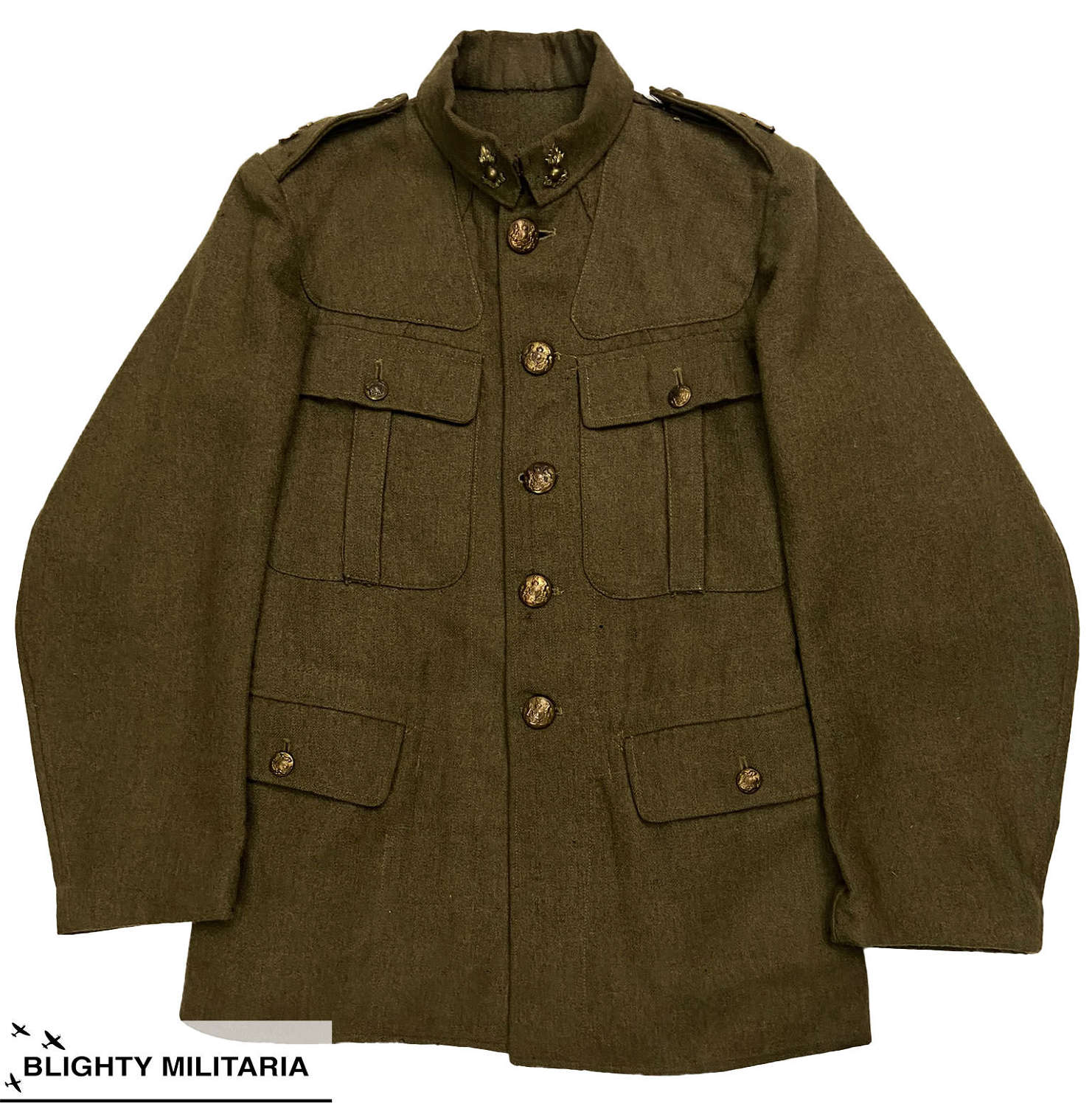
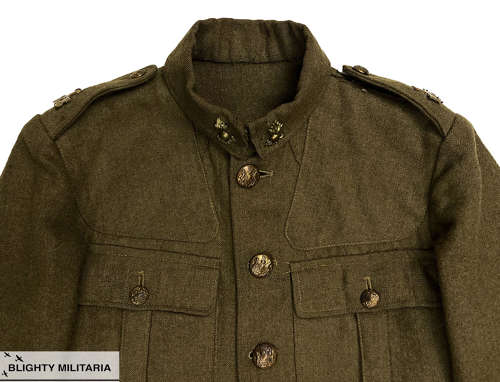
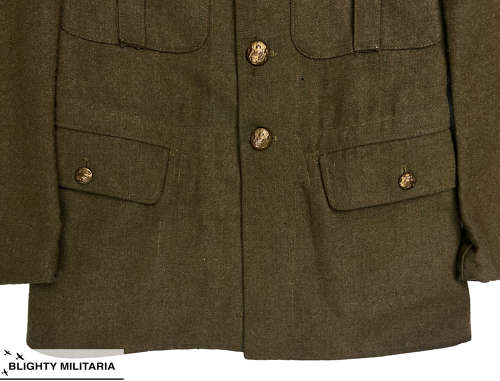
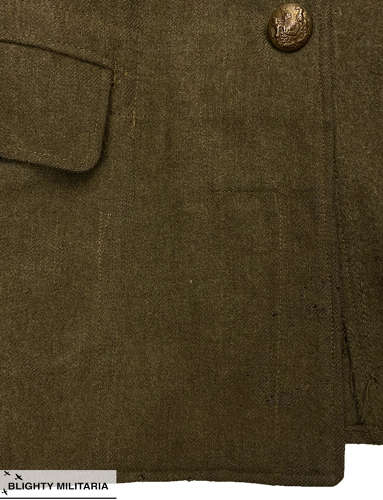
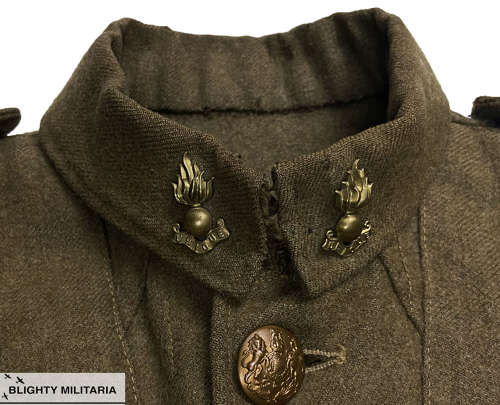
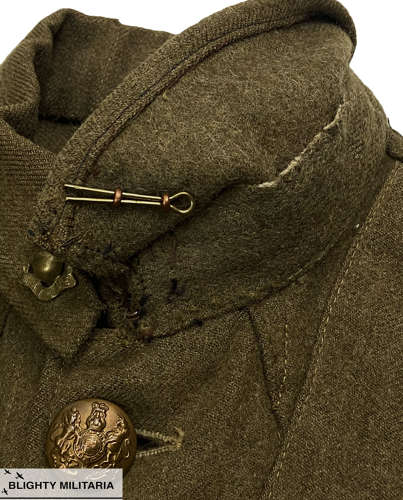
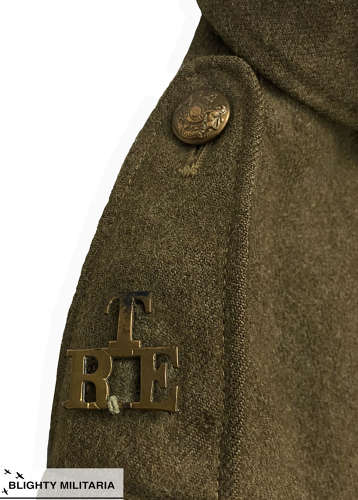
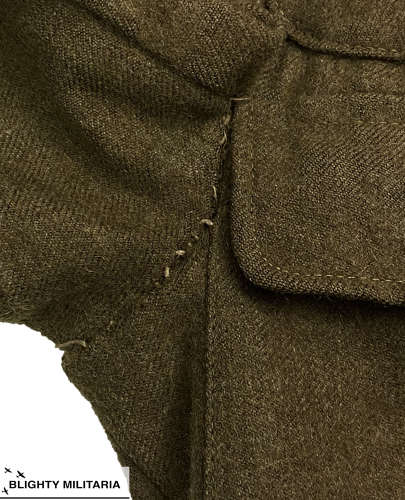
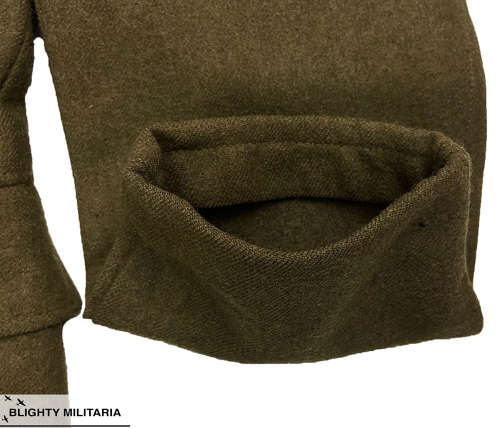
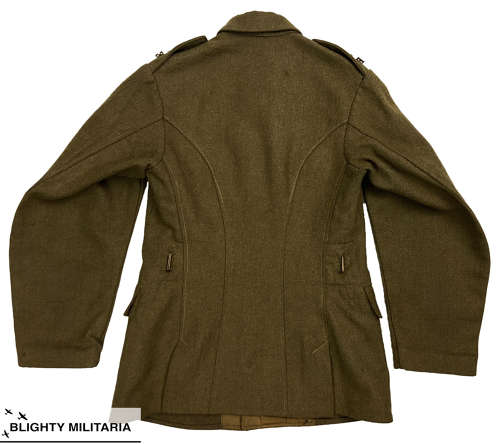
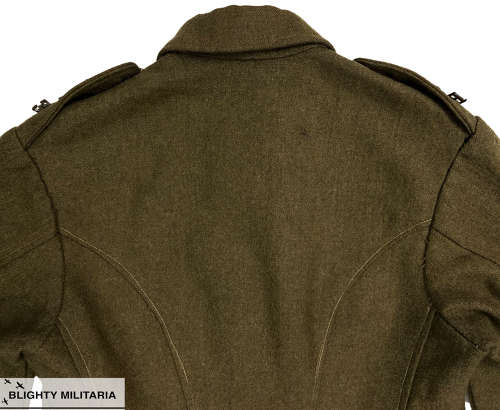
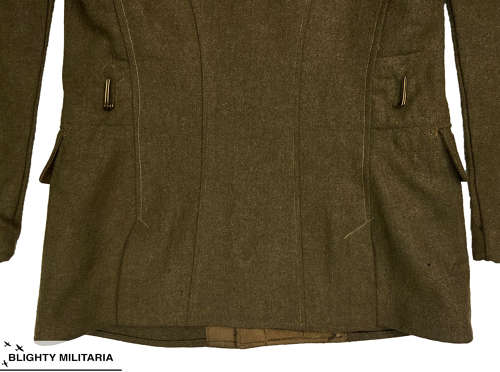
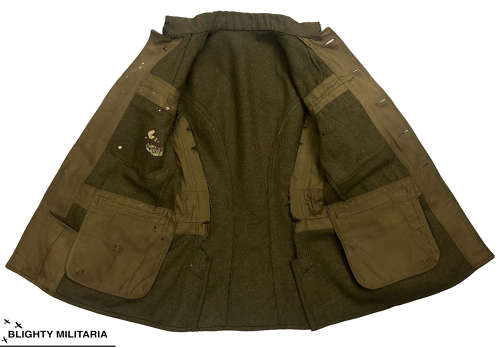
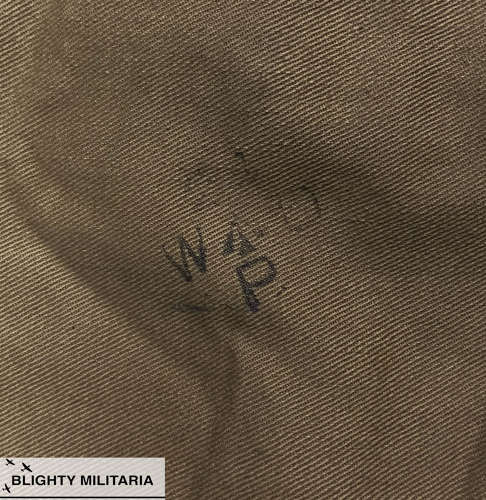
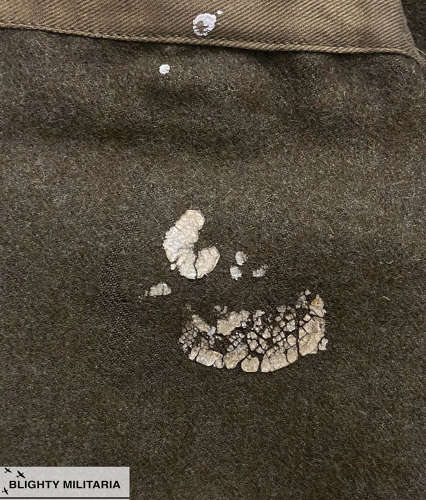
Code: 54253
A rare original Great War period 1918 pattern British Army Service Dress Tunic which belonged to a private who served with the territorial army as a sapper during the 1920s.
This pattern of tunic was introduced in 1918 and was made in limited numbers until 1921 when it was replaced with a new pattern tunic which is often referred to as '1922 pattern' by collectors today. The most obvious feature on this late war pattern of tunic is the single pleat underneath the collar. The tunic retains the War Department acceptance stampe with the letter 'P' underneath. This denotes Pimlico as the depot it passed through and this style of stamp was phased out in the immediate post-war period.
The tunic is made from a khaki green coloured serge wool which is typical of the era. It features a full set of brass kings crown buttons as well as Royal Engineers collar badges and shoulder titles. The titles are surmounted by the letter 'T' which denotes that the original owner served in the territorial army. The collar has been altered to have a single layer rather than the double it would have originally had from the factory. This allows the collar to sit in a much neater manner as there is less material and is a great period modification (picture 6). The original owner has also shortened the sleeves as illustrated in picture 9. These could be let down although it would be a shame to change something original.
Inside the tunic features khaki cotton drill lining and pocket bags which is typical of this pattern. The great war style WD acceptance stamp is marked directly to the right hand pocket bag and is still clear and mostly legible. There is also clear evidence of where the paper label was originally fitted although this has mostly worn away through use.
The tunic is in good condition for its age and it displays well. There are various signs of wear and use including to the underarm area which is illustrated in picture 8. There are a few small holes which may be moth nips but overall the tunic is a nice example.
A rare early tunic which would make a great addition to any collection. This was only produced for a short period and in limited quantities making it a hard to find pattern today. This example is particularly nice as it is just as the original owner last wore it.